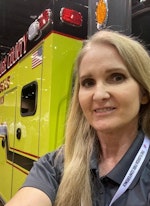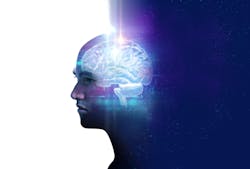Counteracting Unconscious Bias for Inclusive Firehouse Culture
The fire service has enacted diversity initiatives for quite some time now and has enjoyed some progress, but not enough. Fire chiefs have expressed frustration with recruitment, hiring, retention and the realization that younger generations that prioritize inclusive culture might not desire a career in public service.
Research on diversity initiatives suggests that unconscious bias is one of the primary explanations for the continuing lack of representation. Most have heard of unconscious bias but might not know how it forms or how it affects judgment and decision-making.
For firehouses to be diverse and inclusive, team members need an understanding of unconscious bias to counteract the behavior.
How unconscious bias forms
Unconscious bias refers to the attributes that we quickly assign to people based on their social categories, which affects how we see and interact with them. We learn to apply these attributes through socialization experiences, which can cause us to form biases.
Socialization begins in childhood and refers to how people acquire society’s accumulated knowledge and beliefs. Socialization is learned behavior through experiences with families, peers, schools, images, news media, movies, music, books and advertising. In short, people are not born biased but learn it through socialization experiences.
What’s important about unconscious bias is that we all have it. Furthermore, being socialized doesn’t make you a terrible person. The reason why we all have unconscious biases is the result of the way that our brain is structured and wired with neural connections. Scientists estimate that our brain can be exposed subconsciously to 11 million pieces of information at any moment, but only 40–50 of those processes are on a conscious level. Since a far greater number of stimuli is entering our mind than we realize, we take cognitive shortcuts to make decisions easier, or else we would be mentally exhausted having to rationalize every thought. Shortcutting becomes so efficient at interpreting incoming information that we believe that it’s objective when it is, in reality, just how we have acquired socialization experiences. This false objectivity is the problem with unconscious bias.
Two processing systems
Psychologist Dr. Daniel Kahneman, who is notable for his pioneering work on the psychology of judgment and decision-making, divides brain processing into two systems. System 1 comprises 95 percent of the unconscious, intuitive, fast, automatic, associative and error-prone brain functioning. System 2 comprises the remaining 5 percent—the conscious, rational, slow, effortful, logical and reliable brain functioning. Both systems work together to allow us to make decisions, but most of our decisions are on a level below our awareness.
Suppose an engine company entered a structure fire and proceeded to advance a charged hoseline up the stairs. Just as the team stepped on the landing, the commanding officer got an eerie gut feeling without knowing why. Internal words shouted, “Get out!” Then, just after the leader had the engine company abandon the structure, the second floor collapsed.
Later at the firehouse team debriefing, the commanding officer said, “There was something unusual about the heat and structure that led me to make that split-second decision. Those conditions must have triggered my sixth sense, my years of knowledge, making me hear ‘Get out!’ in my mind.”
This story of instinctively knowing that something is wrong exemplifies the fast and automatic System 1 unconscious brain processing.
An example of the slower, conscious and effortful System 2 would be when this same commanding officer studies and she then takes a promotional exam and analytically reads each question and answers the scenarios perfectly.
As I mentioned above, being socialized to have gender bias doesn’t make you a bad person. Case in point: If you were constructing a mental picture of a male commanding officer heroically leading the aforementioned team of firefighters into a structure fire and then quickly deciding to retract the advancement to safety, it’s OK. The familiar story of firefighting along with the associating words—charged hoseline, commanding officer and split-second decision—likely cued your socialized mental shortcuts, making you unconsciously imagine a male officer. Although it was a female commanding officer who correctly utilized her intuitive shortcut knowledge, some readers might have assumed incorrectly the gender without realizing their unconscious bias.
Affecting judgement and decision-making
How unconscious bias works is that when we initially see somebody, their cues make our brain want to categorize based on our socialization experiences. Once somebody is categorized, the attributes that we learned as part of that group get assigned to the person. We assume that the person represents everything that’s part of the category, influencing what we expect to see.
In fact, our brain processing can override objective facts about a person. We tend to notice information that confirms our learned socialization, and our brain tends to cancel anything that disconfirms the bias. This confirming filtering is what psychologists call confirmation bias.
Socialized attributes help men to gain fire service respect more quickly than women do. For example: A fire department hires two firefighters, one male and one female. Because the male belongs to a socialized group of strength, authority and competence, he already is assumed knowledgeable and ready for duty based on his gender alone.
On the other hand, the female likely will face suspicion surrounding socialized negative assumptions of weakness, indecisiveness and incompetence. Because the female belongs to a group that’s attached to unjust attributes, she likely will experience unconscious gender bias, be held to higher standards and face heightened scrutiny because of confirmation bias.
Counteracting unconscious bias
Below are two examples of how to counteract unconscious bias for inclusive firehouse culture.
- Team members should interrupt microaggressions (subtle offenses) and provide ways to practice microaffirmations (small uplifting) whenever possible for inclusive firehouse culture. This advocating action is called allyship.
Suppose a male firefighter made a microaggression toward a female about her driving the apparatus that day. Another male could provide allyship with a microaffirmation by stating that research confirms that females increase firehouse safety and have fewer driving accidents than men have.
When allyship becomes the norm, unconscious bias declines.
- Team members can support those who are afflicted by unconscious bias by learning about those afflicted members’ lived experiences, by promoting equity and by highlighting those members’ accomplishments. This type of relational support is called an ally. Allies are essential for women’s well-being, knowing that they have supporters.
A male ally could educate himself about unconscious bias, increasing empathy to build relationships. He could develop equitable policies for women and offer station design solutions for separate sleeping quarters and private bathrooms.
Also, highlighting female accomplishments is a hallmark of being an ally, because confirmation bias is commonly experienced with women, leaving them to believe that they must be twice as good as men.
When women have allies on duty, unconscious bias is less likely to rule.
Potential for inclusion
Too often, team members have been reluctant to discuss unconscious bias and how it negatively affects recruitment, hiring and retention, but that might change with incoming younger generations. Understanding our two-system brain processing and interrupting unconscious bias with allyship and ally support will counteract behavior for inclusive firehouse culture.

Shara N. Thompson
Shara N. Thompson holds a Master of Human Relations from the University of Oklahoma. She is pursuing a Ph.D. in change leadership in equity and inclusion at the University of Central Arkansas. Thompson is the first hired female firefighter/paramedic for the Addison, TX, Fire Department and the first female cadet to graduate from Collin College Fire and EMS Academy. A licensed paramedic and graduate of the University of Texas Southwestern Medical Center, she holds a degree in interdisciplinary studies (psychology and sociology) from the University of Texas at Dallas and is a recipient of the Who's Who Among Students in American Universities and Colleges National Leadership Inductee. Thompson holds severa graduate certificates in social sciences, including from Northwestern University and Cornell University.





